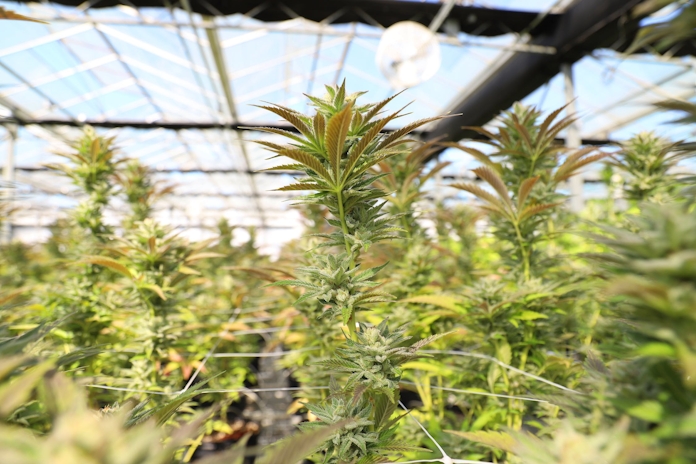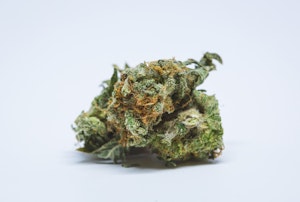
Photo by Cannafornia
Plugging Into AI For Cannabis Farming
The future of cannabis cultivation is here, and it’s not just high – it’s AI.
If you thought the cultivation of cannabis was all about green thumbs and potting soil, brace yourself for a paradigm shift.
Just like in almost every other sector, cannabis farming is getting a high-tech makeover, adopting artificial intelligence (AI) to spruce up its operations.
Benefits And Challenges Of AI For Cannabis Cultivation
AI is transforming the way we grow cannabis, helping growers optimize their conditions, automate processes, and dramatically boost both the quality and yield of your plants.
AI wears many hats in cannabis farming. First, identifying pests and early-stage diseases allows AI to let you step in and provide management solutions that help keep crop loss to a minimum.
Medically, AI is being used to construct molecular profiles of cannabis plants to assess which plants would be best suited for particular conditions, enhancing the efficacy of medicinal cannabis.
Let’s not forget about quality control – image recognition software can screen products during the packaging stage for any abnormalities, such as incorrect labeling, improper sealing, or overall damaged products. This ensures complete package content transparency.
From this vantage point, AI paints a rosy picture of cannabis cultivation. But, you’re probably wondering, are there thorns along the way?
With AI being a heavy data collector, it raises critical data privacy and security concerns. Ensuring cybersecurity and appropriate data management measures will be crucial, adding additional cost to the AI implementation.
When we get cozy with AI, we risk becoming too dependent on its systems. Just like any other technology, system failures can lead to operational snags. Imagine it similar to a power outage during a greenhouse’s busiest time – not a convenient moment.
The efficiency of AI poses a double-edged sword – streamlining operations means potential job displacement, which can have both social and economic implications.
Don’t be fooled, AI is not a cheap date. From the tech itself to the installation, maintenance, and training, the initial investment can be costly.
AI Vs Conventional Farming In Cannabis

Just as the strains of cannabis have evolved over the years, so too have the methods of cultivation.
Conventional cannabis farming has been all about the hands-on, manual care of our favorite flower. A labor of love. Growers typically rely on experience, intuition, and sometimes a little luck, to guide them through the process of planting, maintaining, and harvesting cannabis.
Conventional cannabis farming relies on an intimate understanding of the plants – often a personal connection between the farmer and the plant.
While some may argue that AI threatens to uproot this delicate connection, others believe that AI can simply enhance growers’ approach so that the honored grower-plant relationship lives on.
The question of AI versus conventional farming isn’t about dethroning one over the other – it’s more about exploring the potential in both methods and how integrating the best of both worlds could light the path to a greener, more efficient cannabis future.
Getting Started With AI In Cannabis Farming
Caught the AI bug yet? If you’re wondering how to invite AI systems to your cannabis cultivation party, we’ve got you covered.
This section is all about helping you begin your soon-to-be tech-savvy cannabis cultivation journey.
1. Identify Your Needs – What issues are you hoping to solve with AI? If your farm is held captive by pests, an AI solution such as learning-based image recognition software could be your knight in shining armor with its 24/7 watch on your plants, alerting you in real-time of any pests.
2. Set a Budget – Understanding the financial commitment is important. AI comes with a price tag as costs could include software purchase, installation fees, hardware, and maintenance, along with training employees on new systems.
3. Find the Right Expertise – Implementing AI may require some additional help, especially if you’re a stranger to the field. Hiring someone with expertise in IT could make for a smoother transition.
4. Data Management – With your shiny new AI tool continuously collecting data, it is crucial to manage it effectively. Developing a secure system to store this data and an efficient method to use it for informed decision-making will be extremely helpful and will help inform your decision-making.
5. Monitor and Adjust – The journey is not done with the implementation of your new AI tool. Constant monitoring is very important. Is the AI system nabbing pests in time? Is there an increased production yield? You may need to adjust certain parameters or consider trying different AI tools if certain results are not obtained.
Embracing AI In Cannabis Farming

As we roll toward the end of our dive into cannabis farming and the integration of AI, it is clear that the green community is witnessing an evolution in cultivation practices.
Sure, the journey isn’t without its bumps – with the initial investment, navigating the learning curve of new AI systems and data management may be challenging to navigate, the key lies in careful planning, continuous learning, and adaptation.
In the era of technological advancement, one thing is certain – AI has a role in agriculture, including cannabis farming.
Staying curious as cultivators might just be the secret ingredient to growing those magical buds – sounds a lot like life, doesn’t it?
Herb Recommended Products:
READ MORE










